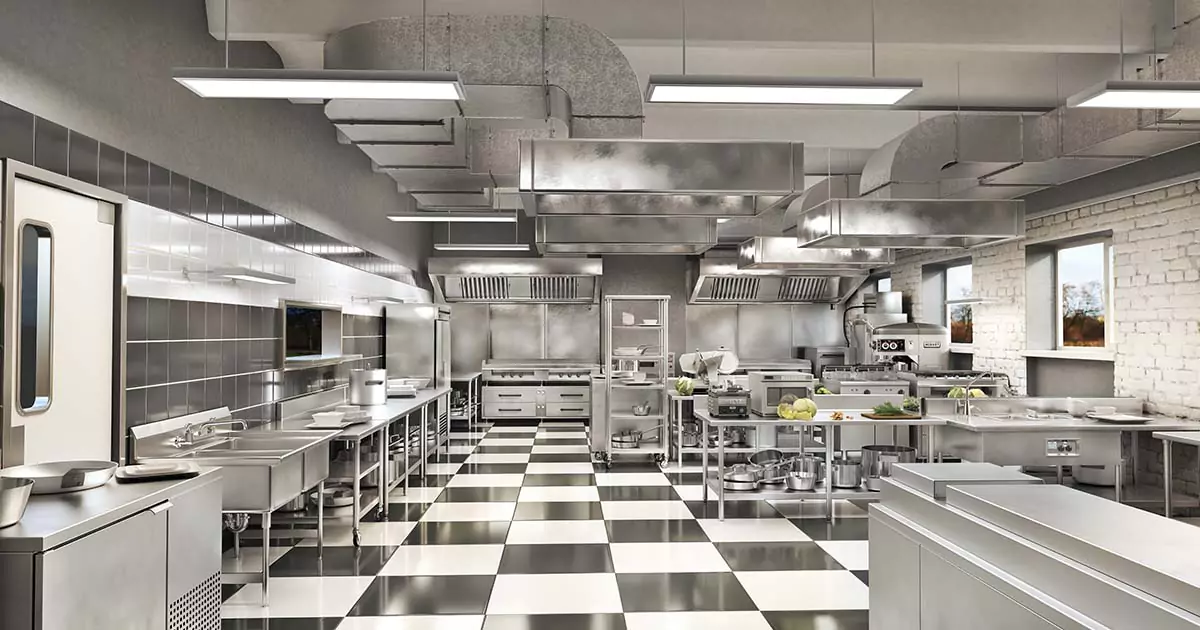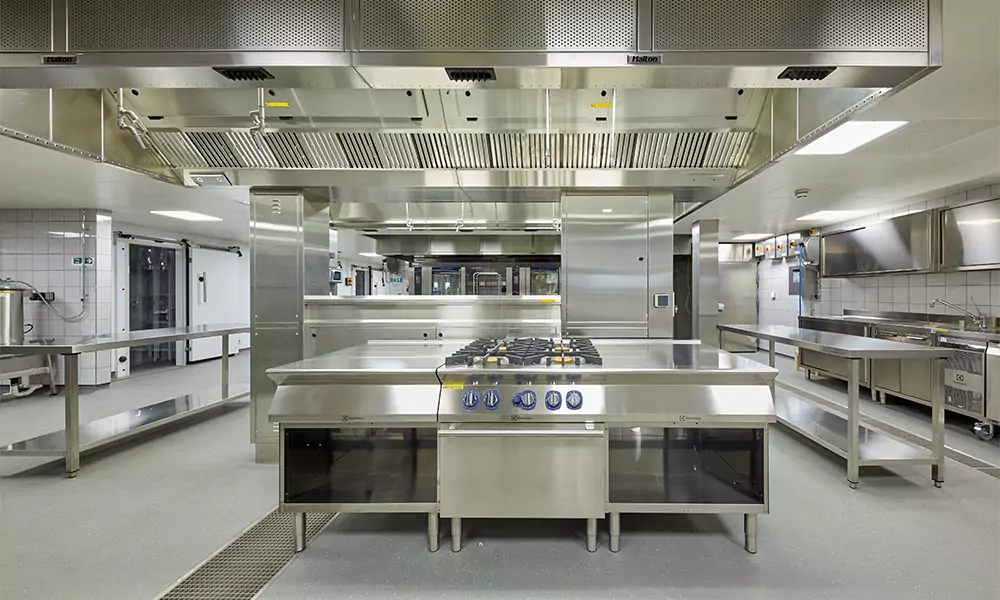In today’s fast-paced world, the commercial kitchen industry is constantly evolving to meet the changing needs and demands of consumers. With technological advancements and shifting consumer preferences, the future of Commercial Kitchen Design: Trends and Innovations. This article explores the key developments and emerging concepts that will shape the future of commercial kitchen design.
- Introduction
Commercial kitchens are the heart of the foodservice industry, and their design plays a crucial role in enhancing productivity, efficiency, and customer satisfaction. As the industry evolves, new trends and innovations are reshaping the way commercial kitchens are designed and operated Commercial Kitchen Design: Trends and Innovations. This article explores the exciting future of commercial kitchen design and highlights the key factors driving these changes.
- Integration of Smart Technology
In the future, commercial kitchens will become more interconnected through the integration of smart technology. From intelligent appliances to connected workstations, the use of IoT (Internet of Things) devices will revolutionize kitchen operations. Smart kitchen equipment will enable real-time monitoring, predictive maintenance, and energy optimization, leading to improved efficiency and cost savings.
- Sustainable and Energy-Efficient Solutions
With growing concerns about environmental sustainability, the future of commercial kitchen design will focus on incorporating sustainable and energy-efficient solutions. This includes energy-efficient appliances, water-saving fixtures, and waste management systems. The use of renewable energy sources such as solar power will also gain prominence, reducing the carbon footprint of commercial kitchens.
- Modular and Flexible Design
Modularity and flexibility will be key principles in future commercial kitchen design. Modular equipment and fixtures will allow for easy reconfiguration and customization, accommodating changing needs and optimizing space utilization. This flexibility will enable kitchens to adapt to new menu offerings, trends, and operational requirements without the need for extensive renovations.
- Ergonomic and User-Friendly Layouts
The future of commercial kitchen design will prioritize ergonomic layouts that enhance the comfort and productivity of kitchen staff. Workstations will be strategically positioned to minimize physical strain and repetitive tasks, reducing the risk of injuries. User-friendly interfaces and intuitive controls will also be incorporated, simplifying the operation of complex equipment.
- Emphasis on Hygiene and Food Safety
Ensuring high standards of hygiene and food safety will remain a top priority in the future of commercial kitchen design. Innovations such as antimicrobial surfaces, touchless technologies, and automated cleaning systems will help prevent the spread of pathogens and maintain a clean working environment. Proper ventilation and air filtration systems will also be integrated to improve indoor air quality.
- Integration of Robotics and Automation
Advancements in robotics and automation will transform commercial kitchen operations. Robots will take over repetitive and time-consuming tasks, such as food preparation, dishwashing, and inventory management. This automation will free up human resources, allowing kitchen staff to focus on creative culinary endeavors and customer service.
- Multi-Functional Spaces
Future commercial kitchens will embrace multi-functional spaces that serve various purposes. These spaces can be transformed based on the specific needs of the operation, whether it’s hosting cooking classes, pop-up events, or private dining experiences. The flexibility of these spaces will create new revenue streams and enhance the overall dining experience.
- Designing for Delivery and Takeout
The rise of food delivery and takeout services has transformed the foodservice industry. In the future, commercial kitchens will be designed with dedicated spaces and equipment for efficient order fulfillment. Specialized packaging areas, pickup counters, and optimized delivery routes will be incorporated to meet the increasing demand for off-premises dining experiences.
- Customization and Personalization
Commercial kitchens of the future will focus on providing customized and personalized experiences to diners. Advanced data analytics and customer profiling will enable chefs to tailor their offerings to individual preferences, dietary restrictions, and cultural backgrounds. Personalization will extend beyond the menu, with customizable dining environments and interactive experiences.
Conclusion
The future of commercial kitchen design is filled with exciting possibilities. From smart technology and sustainable solutions to ergonomic layouts and robotic automation, the industry is evolving to meet the demands of a changing world. By embracing these trends and innovations, businesses can create efficient, sustainable, and customer-centric kitchen spaces that drive success in the foodservice industry.
“Don’t forget to share this post!”






